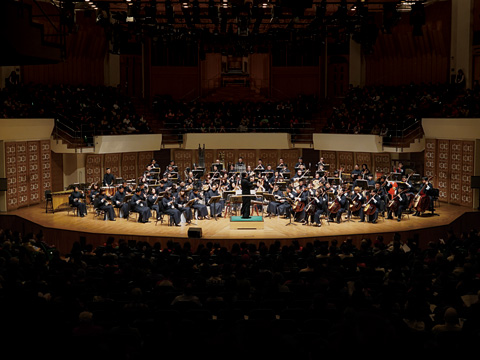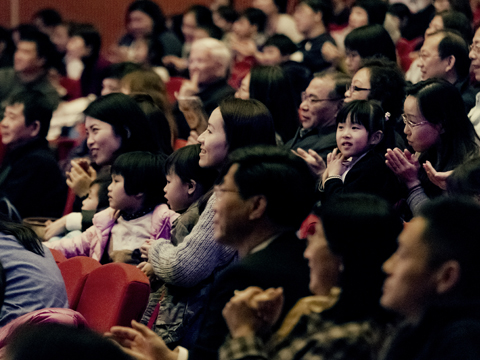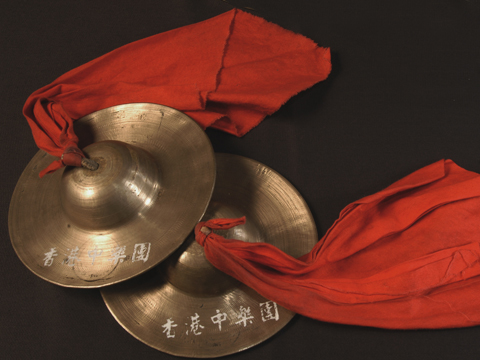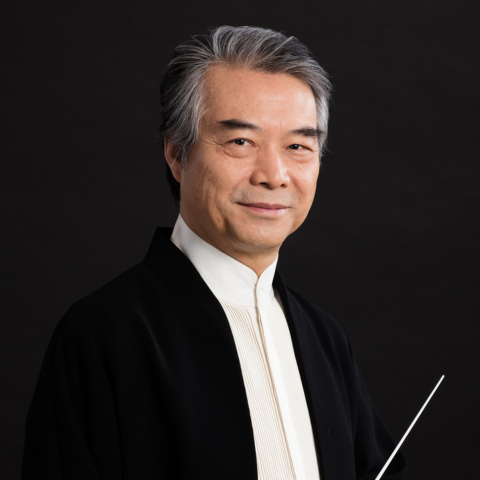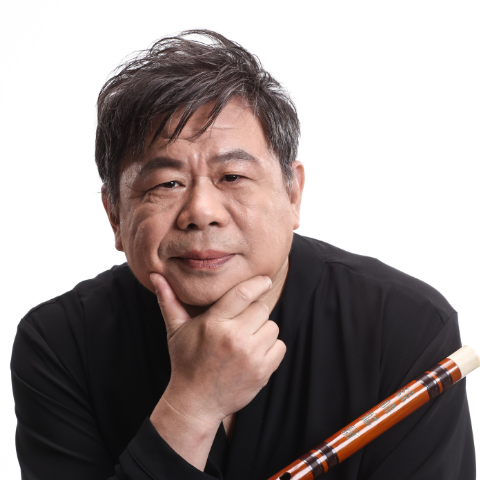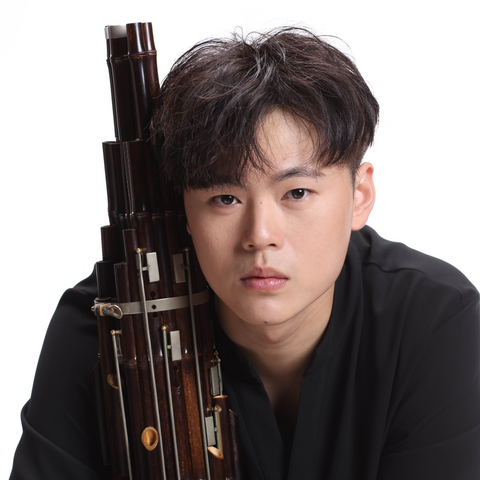
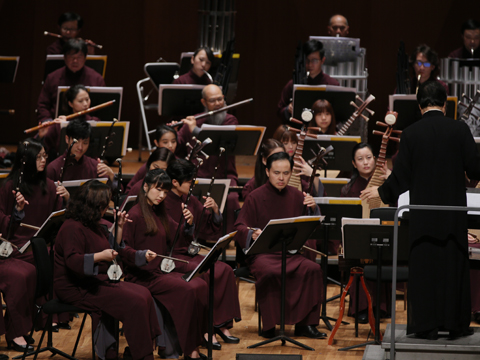
HKCO
Hong Kong Chinese Orchestra Orchestra Members Artistic Director and Principal Conductor for Life Council Advisors & Artistic Advisors Council Members Management Team Vacancy Contact Us (Tel: 3185 1600)

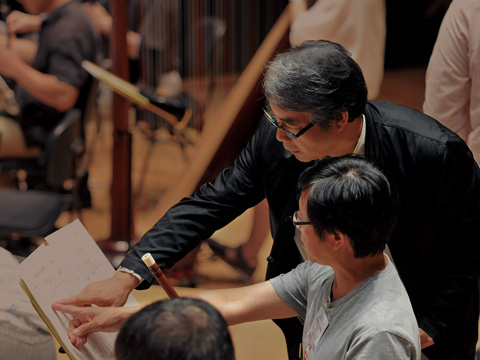
What's On

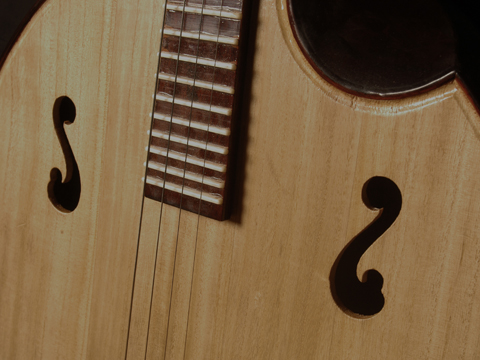
Education
The HKCO Orchestral Academy Hong Kong Youth Zheng Ensemble Hong Kong Young Chinese Orchestra Music Courses Chinese Music Conducting 賽馬會中國音樂教育及推廣計劃 Chinese Music Talent Training Scheme HKJC Chinese Music 360 The International Drum Graded Exam

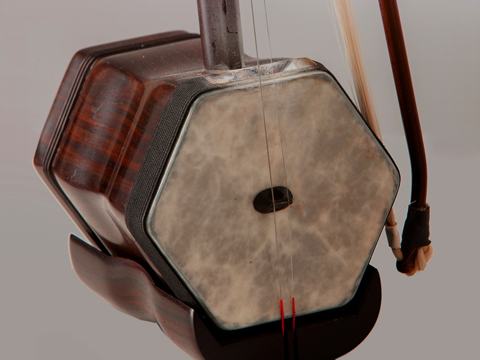
Instrument R&D
Eco-Huqins Chinese Instruments Standard Orchestra Instrument Range Chart and Page Format of the Full Score Configuration of the Orchestra
44th Orchestral Season
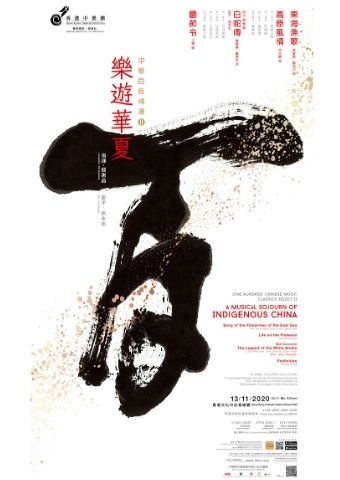
One Hundred Chinese Music Classics Select II - A Musical Sojourn of Indigenous China
Lusheng: Wei Shen-fu, Yuen Kin Hei
Song of the Fishermen of the East Sea Ma Shenglong and Gu Guanren
Life on the Plateaux He Zhanhao
The first movement: Mountain View from a Yi Village
The second movement: Love between the Door and the Walls
The third movement: Love of the Lusheng
Lusheng: Wei Shen-fu, Yuen Kin Hei
The fourth movement: The Singing Contest
Dizi Concerto
The Legend of the White Snake Law Wai-lun and Cheng Chai-man
The first movement: The Encounter
The second movement: Monk Fahai Intervenes
The third movement: The Flooding of the Jinshan Temple
The fourth movement: Sunset at Leifeng
Dizi: Sun Yongzhi
Festivities Wang Ning
Exuberant Musical Terroirs of Indigenous China
Chow Fan-fu
‘A Musical Sojourn of Indigenous China’ is the second of the ‘One Hundred Chinese Music Classics Select’ concert series. The four works selected for this concert highlight the varied sounds coming from the ancient earth of exotic Cathay. Riding on the wings of the music, the audience can travel across the vast terrain to experience its richly diverse cultures and customs.
China’s long cultural tradition, broad coverage, and ethnicity of over 50 nationalities have spawned a beautifully rich tapestry of folk music. As a vibrant art form, it evolves into different musical styles when it reaches different regions, meets with local customs or folk cultures. The variants form a treasure trove of traditional Chinese music, and the source of inspiration for countless composers. Such is evident in the four pieces on the programme of this concert.
Music of the seven cultural circles on China soil
Style variation is often an important aspect of music appreciation. The styles of Western classical music largely evolved alongside their development history, while Chinese musical styles sprang from the seven cultural circles shaped by the traditions and customs of the respective regions, viz.:
(1) The north-east cultural circle: where the Manchurians integrate with the Han people in everyday life; their musical style is mostly intense and powerful.
(2) The nomadic cultural circle: these nomadic people are fierce fighters whose music is equally rustic and open-hearted.
(3) The Yellow River cultural circle: this is the hinterland of traditional Chinese culture; their music is earthy, quaint and deep.
(4) The Yangtze River cultural circle: characterized by a delicate finesse, its musical style is sweet and graceful.
(5) The Qinghai cultural circle: characterized by Tibetan customs and colourful Tibetan Buddhism, their music has a mystic Buddhist aura.
(6) The Yunnan-Guizhou cultural circle: this is the area where many ethnic minorities of Yunnan and Guizhou live. Because of the ethnic differences, their customs and cultural practices are also rich and diverse. Their music style is rich and colourful.
(7) The Minnan Taiwan cultural circle: this is where much of the ancient cultural phenomena and practices of the historical Central Plains have been preserved. Their music style is by and large lively and bright.
The development of Chinese folk music is closely intertwined with the everyday life of the common folks; when life is exuberant, so is the music. China has been an agrarian country since ancient times. Life of most common folks was largely agricultural, which is very different from the modern lifestyle of urbanites today. Composers of our times seek nourishment from folk music as it has inherited with vibrancy the age-old traditions of the Chinese, and integrate it with modern symphonic works of full-size Chinese orchestras. While the musical contents of the four compositions in this concert are derived from different cultural circles, the respective unique colours and styles of their origins are retained. They paint pictures that can take the audience to travel around China, armchair style.
Pictorial elements come alive
The four passages of Song of the Fishermen of the East Sea co-written by Ma Shenglong and Gu Guanren use materials mainly from the folk music of Zhejiang. Many of the sections therefore have the light, delicate and graceful characteristics of the Yangtze River cultural circle. Yet once it integrates with the passionate, powerful and colourful percussion music of the Zhejiang gongs and drums, the contrast between the two styles creates scene after scene of the contemporary way of life of the fishermen at a fishing port in the East Sea.
In four movements, Life on the Plateaux by He Zhanhao moves forward using the unique musical idiom of the ethnic minorities on the Yunnan and Guizhou Plateaux in the Yunnan-Guizhou cultural circle. Tunes of folk songs from the Yi, Yao, Miao and Buyi minority groups weave to form four genre paintings of life on the highlands through the contemporary sounds of a modern Chinese orchestra.
If the first half of the concert sets off from the eastern coast of China with Song of the Fishermen of the East Sea, and goes up the Yunnan and Guizhou Plateaux in the southwest with Life on the Plateaux, the second half returns to the Yangtze River cultural circle in Zhejiang with the dizi concerto The Legend of the White Snake, co-written by Law Wai-lun and Cheng Chai-man. While the music adopts the typically lyrical and delicate timbre of Jiangnan (south of the Yangtze River), theatrical elements such as those from the indigenous Wuju Opera and Hui Opera also contributed to the inspiration. It narrates in four movements the four dramatic highlights of the folk tale, from the first meeting between Xu Xian and the White Snake to their life after marriage, tracing the emotional changes and dramatic conflicts. They are therefore quite different from the four cantabile descriptive passages of life of the fishing folks in Song of the Fishermen of the East Sea. The juxtaposition sets off the distinct contrast.
As the finale of the concert, Festivities by Wang Ning seeks nourishments directly from all directions, folk music from a variety of ethnic groups for further refinement. One can say that through the music of Festivities, Wang Ning intends to bring the audience to the colourful festivities of the celebrations in different parts of China. But the territory is just too expansive for any song, let alone Festivities, on the programme to cover the myriad treasures of the land. As one single concert programme, ‘A Musical Sojourn of Indigenous China’ is far from being sufficient for the audience to roam among all the cultural circles to experience the grandeurs of China. A whole concert series is therefore totally reasonable and supports keen anticipation. Having said that, if one wants to make the said sojourn through the four works here, one has to not only listen with the ears, but also feel with the heart. It is like physical travelling, when seeing through the eyes is not enough, and feeling through the heart is essential.
Your Support
Friends of HKCO
Copyright © 2024 HKCO
